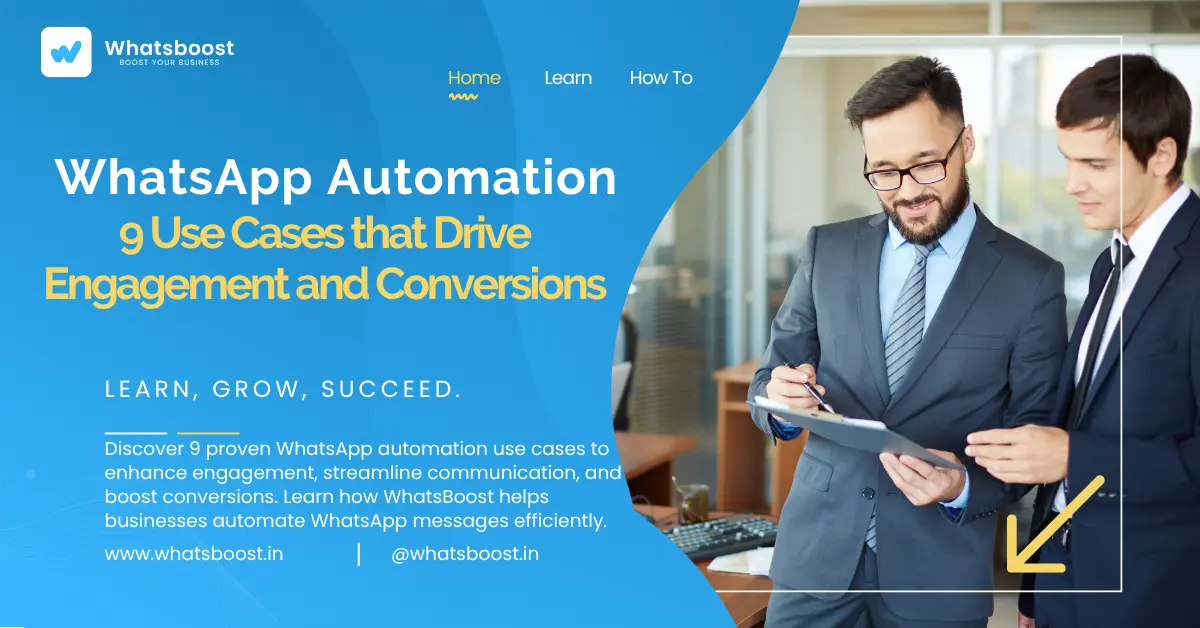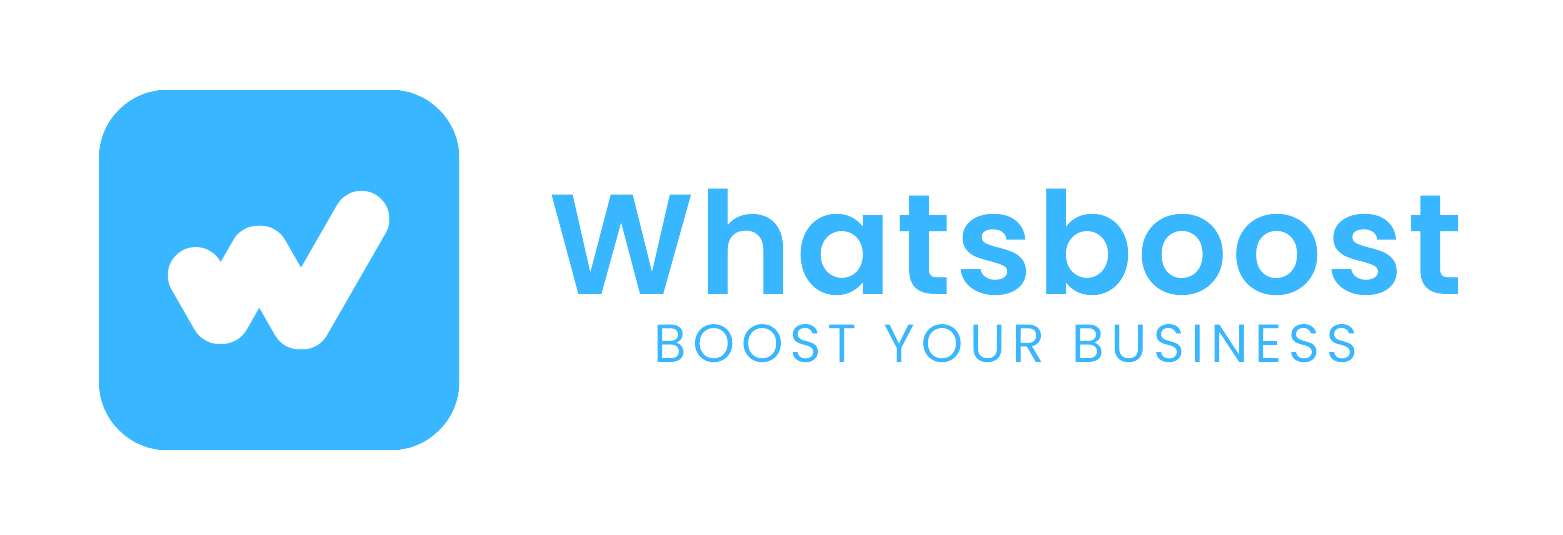
Setup WhatsApp Automation in 2025
Learn how to set up WhatsApp automation step-by-step, its benefits, key features and use cases. Discover how WhatsBoost enables WhatsApp automations without API.
Setup WhatsApp Automation: A Guide to WhatsApp Automations & Use Cases
WhatsApp has transformed how businesses engage with customers. From retail brands to e-commerce stores to healthcare and finance sectors, WhatsApp is now a staple channel for its accessibility, feasibility and effectiveness.
However, simply using WhatsApp is no longer enough—growing businesses must leverage automation to reach all their customers efficiently while freeing up human agents for pressing tasks. This guide explains what WhatsApp automation is, how it works, its major benefits, key use cases, how to set it up, and best practices—with help from the capabilities of WhatsBoost.
What is WhatsApp Automation?
WhatsApp automation refers to using tools or software to manage WhatsApp communications in a streamlined, automated way. It involves automating tasks such as:
-
Sending personalised promotional messages, coupon codes, etc.
-
Post-purchase or post-support follow-ups.
-
Responding to common customer inquiries (FAQs).
-
Sending order confirmation and delivery updates.
-
Assigning chats to team members and managing workflows.
In essence, automation ensures consistency, promptness and efficiency in communication—reducing reliance on manual response.
Key Benefits of WhatsApp Automation for Businesses
Enhanced customer engagement
Automated WhatsApp messages and personalised notifications help keep customers engaged—whether through thank-you messages, feedback requests, order updates or event invites.
Improved response times
Automation eliminates the waiting time associated with manual responses. Whether in marketing, support or fulfilment, timely messages improve user experience significantly.
Cost-effectiveness
By automating routine communication at scale, businesses reduce workload and cost. Automation tools enable businesses to scale without proportional increase in manpower.
Scalability
As your business grows, so does the need to manage a higher volume of conversations. Automation allows you to engage at scale while making communications feel personal.
Increased sales and conversions
WhatsApp often sees higher conversion rates than traditional channels. Automating nurturing flows, abandoned-cart reminders and follow-ups increases conversions from this channel.
Major Use Cases of WhatsApp Automation
Below are several powerful use cases where automation delivers real value.
Marketing and Promotional Campaigns
Automate outreach to thousands of users in one go—whether for sales alerts, discount offers, personalized recommendations or event registrations.
Customer Support Automation
Automate responses to frequent queries via chatbots or message templates. This reduces support load while improving speed and consistency of response.
Order Confirmations and Updates
Automatically send messages when orders are placed, shipped or delivered. Clear communication builds trust and reduces support ticket volume.
Appointment Scheduling and Reminders
For service sectors like healthcare, salons or finance: automate booking confirmations and reminders to reduce no-shows and improve customer satisfaction.
Lead Generation and Follow-Ups
Use chatbots or triggers to engage new leads, ask qualifying questions, and nurture them through sequences until they are ready to convert.
How Does WhatsApp Automation Work?
Automation typically involves integrating WhatsApp with your CRM, data sources (Google Sheets, landing forms) and workflow engines. The process includes:
-
Capturing user data (name, number, interest)
-
Triggering a predefined workflow or sequence based on that data
-
Sending scheduled messages, conditional messages and follow-ups
-
Analysing performance (delivery, open, conversion) and optimising
Platforms such as WhatsBoost simplify this by offering no-code workflows, multiple integrations and support without needing the official WhatsApp Business API.
How to Setup WhatsApp Automation
You can set up Automation in two main ways: via the WhatsApp Business App for basic automation, or a specialised automation platform like WhatsBoost for advanced workflows.
Basic Setup using WhatsApp Business App
-
Open your WhatsApp Business account.
-
Navigate to Business Tools.
-
Enable & customise Greeting Message, Away Message or Quick Replies.
-
Use these features for simple automation (outside business hours, simple FAQ replies).
While useful, this method has limitations at scale—no multi-step workflows, no broad integrations, limited scheduling.
Advanced Automation using WhatsBoost
-
Sign up for WhatsBoost and connect your WhatsApp number.
-
Define workflows: triggers (new lead added, tag applied), actions (send message, update CRM).
-
Create message templates: promotional, reminder, follow-up, feedback.
-
Connect data sources: Google Sheets, CRMs, landing pages.
-
Schedule sequences: e.g. Day 0 welcome, Day 2 follow-up, Day 5 reminder.
-
Monitor analytics: delivery rate, engagement, conversions.
-
Adjust and optimise your workflows based on performance data.
Best Practices for Implementing WhatsApp Automation
Understand customer needs
Analyse customer behaviour and craft automated messages that address actual pain points and timing.
Personalise messages
Use variables (name, product, city) to make automated messages more human and relevant.
Ensure compliance
Obtain explicit consent, give opt-out options and follow WhatsApp’s policies.
Regularly review workflows
Automation isn’t set-and-forget—monitor performance and refine triggers, timing, content.
Measure performance
Track key metrics such as delivery rate, response rate, conversion rate and iterate accordingly.
Key Features to Look for in a WhatsApp Automation Tool
-
Automated scheduled messages and templates
-
No-code chatbot builder or flow designer
-
CRM or Google Sheets integration
-
Multi-device or multi-user support
-
Analytics dashboard (delivery, open, response)
-
Contact list management, segmentation
-
Group/community messaging support
The WhatsBoost platform offers all these features and enables businesses to scale WhatsApp communications effectively.
FAQs
Q1. What is required to start WhatsApp automation?
You’ll need a business WhatsApp account, automation software or platform, lead/data source and message templates. Platforms like WhatsBoost allow you to start without the official API.
Q2. Can I integrate WhatsApp automation with Google Sheets or CRM?
Yes. WhatsBoost supports integrations with Google Sheets, CRMs, landing pages and workflows—making automation seamless. GetApp+1
Q3. Are there restrictions on message volume or risk of blocking?
Automation must respect WhatsApp policies and be done thoughtfully—appropriate timing, consent and content help avoid issues. Use randomised delays and safe sending practices.
Q4. Is automation only for large enterprises?
Not at all. Small and medium businesses also benefit greatly from WhatsApp automation. By automating repetitive tasks, they can focus on high-value activities.
Q5. What distinct advantages does WhatsBoost provide?
WhatsBoost allows automation without needing official API, supports multi-device, integrates with 7,000+ apps and provides workflow features—all making it a strong choice for businesses of all sizes. GetApp+1
Conclusion
In 2025, WhatsApp automation is no longer a luxury—it’s essential for businesses aiming to scale engagement, save time and improve conversions. Whether you are automating marketing campaigns, support workflows or lead nurturing sequences, the right setup can make a significant difference.
By following the steps and best practices above—and leveraging a platform like WhatsBoost—your business can implement effective WhatsApp automations, transform customer conversations and scale communication reliably.
Start your automation journey today and make your WhatsApp channel a growth engine for your business.
